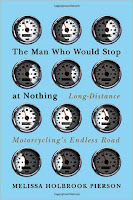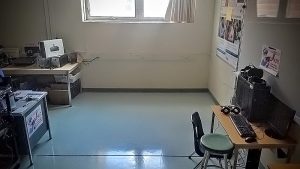When I think back to the late ’80s (the last time I had to involve myself in driver testing), I recall reasonable wait times, full time employees invested in what they were doing and a general sense of competence. I left with my driver’s license feeling like my time wasn’t wasted and the people there knew what they were doing.
 |
| The lost souls trapped in the beige, fluorescent lit hell that is Ontario’s Drivetest Centre. I got in trouble for taking this picture, I hope you like it. |
Since going back for my motorcycle license in 2013 I’ve had to attend Drivetest Centres several times and each one has been worse than the last. The stone eyed ‘funployees’ of Drivetest struggle to handle massive wait times and angry citizens whose time doesn’t seem to matter at all.
While waiting for more than ninety minutes yesterday in an overcrowded holding area I looked up Drivetest and discovered a poster child for why Ontario is failing like it is.
Up until 2003 Driver training was handled by MoT employees. These would have been unionized, government workers who make enough money to pay a mortgage and tended to stick around, meaning they have a vested interest in what they’re doing. In 2003 Mike Harris (aka: ass-clown of the century) decided to privatize driver training in Ontario (because the mess they made giving away the 407 wasn’t enough).
In a matter of months hundreds of full time employees were laid off in the name of efficiency. At the time the six week waiting list to get a license was considered proof of government incompetence and the private sector would come to our rescue! The current backlog is over sixteen weeks. Feeling that private efficiency yet?
At the Drivecentre yesterday I heard one of the employees say that they have a lot of people away on vacation so they are short handed at the busiest time of the year. Another came back after taking only 10 minutes for lunch. While reveling in this Kafkaesque corporate efficiency I thought I’d look up who we pay millions to now for driver testing.
Privatization seems to feed into globalization. Just as he sold off the 407 for a fraction of what it’s worth to a Spanish company, so Harris sold off driver training to another overseas firm, in this case Serco, a billion dollar a year multi-national out of the UK. Their spiel on the Drivetest website is exactly the sort of MBA drivel that makes me sick in my mouth:
Ah, the countless possibilities. Fortunately, thanks to Serco’s crap-tastic personnel management I had a lot of time to consider countless possibilities. The Ontario Government is supposed to oversee the efficiency of this subcontract, but like most privatization they simply turn away from what IS the role of government and takes no responsibility for what has been and continues to be an out and out disaster.
You’d think it would be fairly easy to make licensing a zero-sum game. You charge for licenses whatever it takes to cover the cost of licensing and you keep that money in Ontario instead of shipping off millions of dollars overseas. You then offer bonuses based on accident rates of new drivers and the wait times in Drivetest Centres. The lower the rates and better the wait times, the better the bonus. Or… you could just give it all away to an off-shore concern that couldn’t give a damn about Ontario citizens, their safety, or their time, but sure knows a lot about business.
Meanwhile, we’re all sitting here wondering why Ontario is in the biggest financial mess in its history. Efficiency doesn’t mean off-loading responsibility and doing things cheaply unless you’re in the private sector, then that can be your reason for being. Efficiency and cheapness are not the same thing, though the private sector and conservatives often confuse the two.
Get your finger out Ontario. Stop off-loading important government services to incompetent multi-nationals and keep our money in-province! Fix this!
LINKS
The Dark Side of Privatization
Who we’re paying to administer Ontario Driver Training
Serco quality
We should farm everything out to these guys!
Actually, just do a google-news search of Serco and revel in the excellence
The real costs of privatizing hydro
Privatization: generally a really bad idea
The 407, The 407 again, The 407, it never ends, The 407, WTF?







.jpg)













